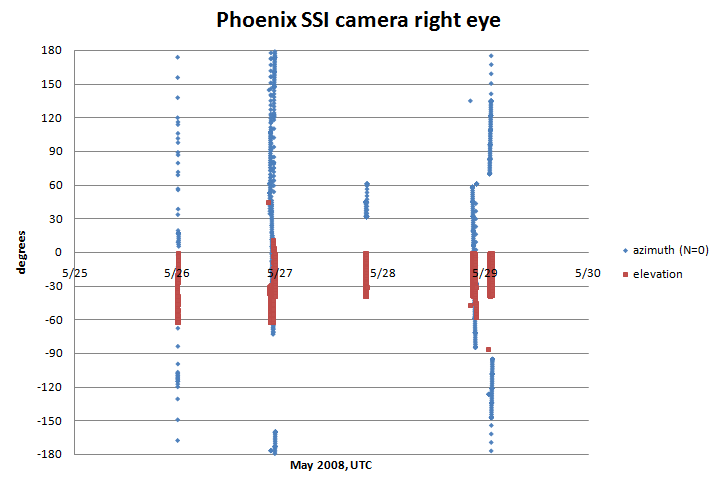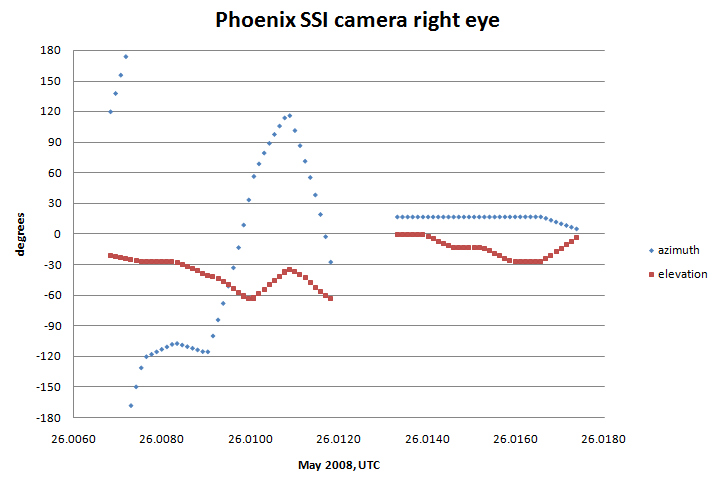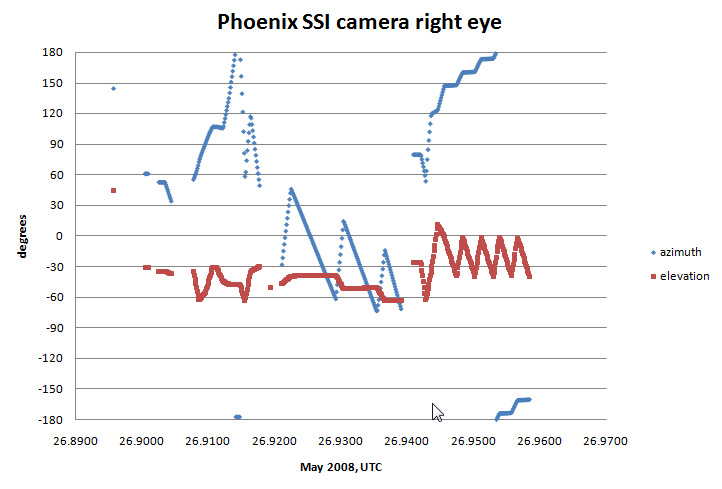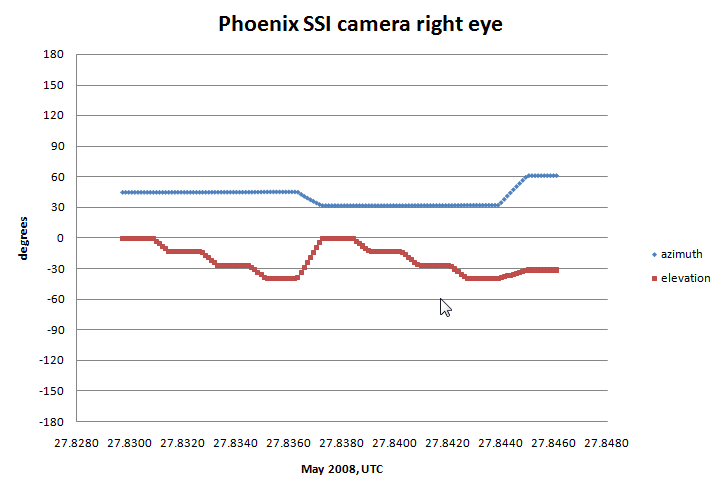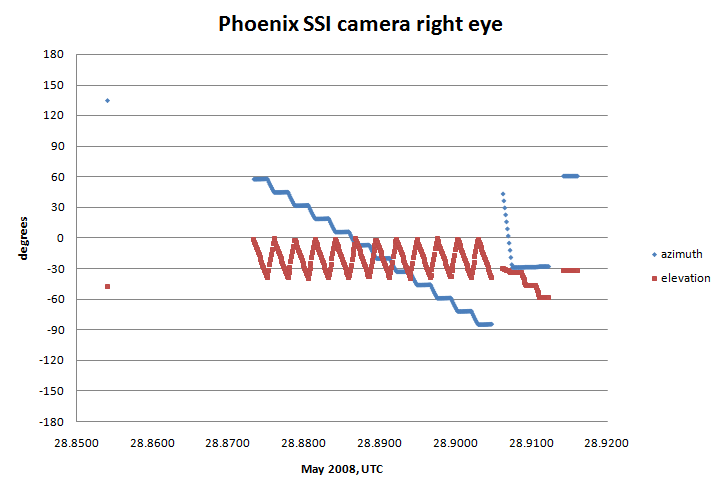QUOTE (djellison @ May 30 2008, 05:48 PM)

Which files, specifically, do you use within that FTP server.
Working with the SPICE kernel files and library is maddening but at least there are a lot of examples and
how-tos. It's really tricky to figure out which kernel files are needed, so I ended up putting in all the Phoenix "CK" (instrument pointing) files, as well as "SPK" (ephemeris) files. In addition, a "frames" kernel is needed which defines the spacecraft/instrument frames and the
frames file for Phoenix is at least worth looking at for the cool ASCII art of the spacecraft and instruments. There's also a "SCLK" (clock) kernel and an "LSK" (leap second) kernel. In short, it's kind of a bear.
As for the code, it goes something like this
CODE
furnsh_c(KERNELS); // load kernels listed in KERNELS file
utc2et_c(DATE,&et); // convert UTC string to ephemeris time et
sce2s_c(PHX,et,MAXCHAR,sclkch); // convert et to spacecraft clock ticks sclkch
scencd_c(PHX, sclkch, &sclkdp ); // convert sclkch string to double sclkdp
ckgp_c(PHX_SSI_LEFT_EYE,sclkdp,tol,"PHX_TOPO",cmat,&clkout,&found); // see if camera pointing is defined for this sclkdp
if (found) {
vequ_c(cmat[2],vinert); // pointing vector in PHX_TOPO frame is the 3rd column of cmat
reclat_c(vinert,&r,&az,&el); // changes rectangular coords to latitudinal
az *= dpr_c(); // convert to degrees
el *= dpr_c();
et2utc_c(et,"ISOC",0,MAXCHAR,utc); // get UTC string for this et
printf("%s %.6f %.6f %.6f\n",utc,r,az,el); // print the record
Maybe if you say what data you need for the animation I could make a windows app to produce it.
